Stars and STEM Stories
Lake Victoria Learning Exhibition Succeeds in Engaging Youth in Vital Hands On Research
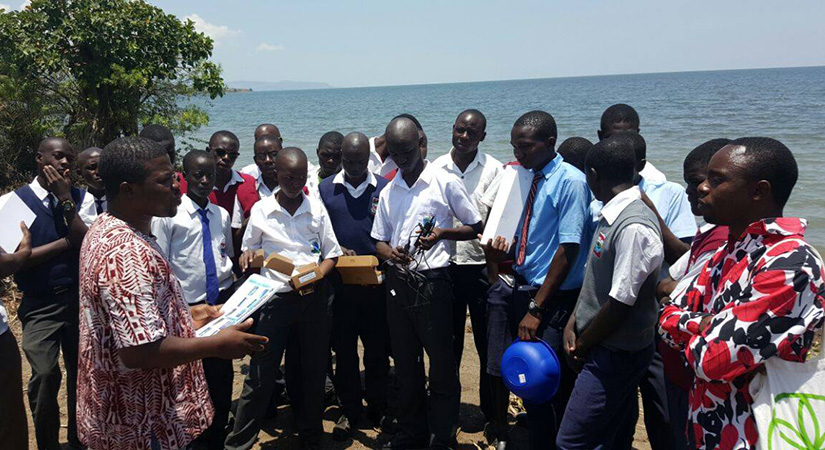
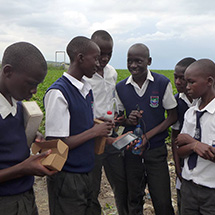 The GLOBE Africa Regional Coordinating Office (RCO). YLACES (Youth Learning As Citizen Environmental Scientists), GLOBE Kenya, and the GLOBE Implementation Office all joined forces to launch the first Lake Victoria Learning Expedition in Africa. The event took place from 18 September through 24 September 2016. The expedition team, led by Africa RCO Coordinator Mark Brettenny, provided equipment, training and evaluation of schools on the shores of Lake Victoria in water monitoring, and engaged schools around the world in learning about the lake and in comparing measurements with data from other lakes.
The GLOBE Africa Regional Coordinating Office (RCO). YLACES (Youth Learning As Citizen Environmental Scientists), GLOBE Kenya, and the GLOBE Implementation Office all joined forces to launch the first Lake Victoria Learning Expedition in Africa. The event took place from 18 September through 24 September 2016. The expedition team, led by Africa RCO Coordinator Mark Brettenny, provided equipment, training and evaluation of schools on the shores of Lake Victoria in water monitoring, and engaged schools around the world in learning about the lake and in comparing measurements with data from other lakes.
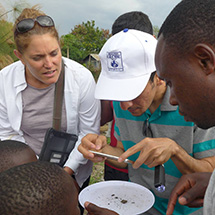 In schools en route to, and on the shores of, Lake Victoria, students engaged in science investigations to explore their local environments. Lake Victoria was of particular interest. Lake Victoria covers more than 68,800 square kilometers. It is the second largest fresh water lake in the world, by surface area, after Lake Superior in North America. Lake Victoria is the lifeblood for the people of Tanzania, Kenya and Uganda who rely on its waters for its huge fishing industry. However, water pollution, over fishing and ecological destruction (through invasive species) have many worried about its future. Through the expedition, the GLOBE students in the region now have the tools to monitor and protect it.
In schools en route to, and on the shores of, Lake Victoria, students engaged in science investigations to explore their local environments. Lake Victoria was of particular interest. Lake Victoria covers more than 68,800 square kilometers. It is the second largest fresh water lake in the world, by surface area, after Lake Superior in North America. Lake Victoria is the lifeblood for the people of Tanzania, Kenya and Uganda who rely on its waters for its huge fishing industry. However, water pollution, over fishing and ecological destruction (through invasive species) have many worried about its future. Through the expedition, the GLOBE students in the region now have the tools to monitor and protect it.
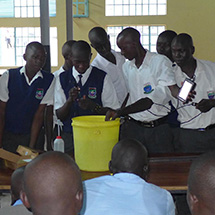 Kristin Wegner of the GLOBE Implementation Office, joined the Expedition Team and sent the following report on 23 September.
Kristin Wegner of the GLOBE Implementation Office, joined the Expedition Team and sent the following report on 23 September.
"This morning we woke up and enjoyed the view from our hotel overlooking Homa Bay. We then stopped up at Homa Boys School to pick up some of the GLOBE students, and then travelled to the Tom Mboya Boys High School in Rusinga Island. We walked to the lake and did the hydrology and atmosphere protocols. The Homa Boys School students demonstrated how to use the LabQuest 2 instruments donated by YLACES to the students of Tom Mboya School. After that, we joined Martin, Paul and Charles as they installed the 3D printed weather station. Paul shared how @Raspberry_Pi works with the boys and how they can access their atmosphere data and compare it to the other schools with 3D printed weather stations.
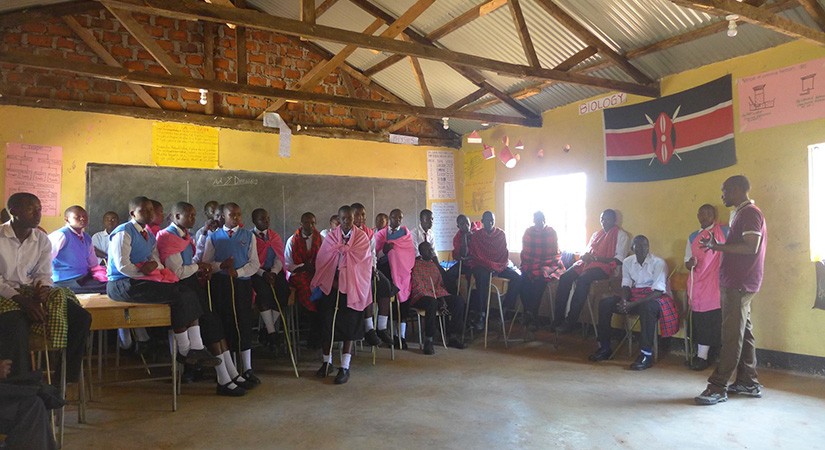
After lunch, we went back to the Homa Bay Boys School. The students presented their knowledge of GLOBE protocols and science content. The expedition team shared the inspirational message of GLOBE, including peace, citizenship, collaborating internationally on environmental issues, volunteering, and STEM careers. We finished the school visit with a meeting with the school director, who was appreciative with our visit and thanked us for being there. Tomorrow we continue our Lake Victoria Learning Expedition with a visit to a school near Maasai Mara and install the last 3D weather station of our trek."
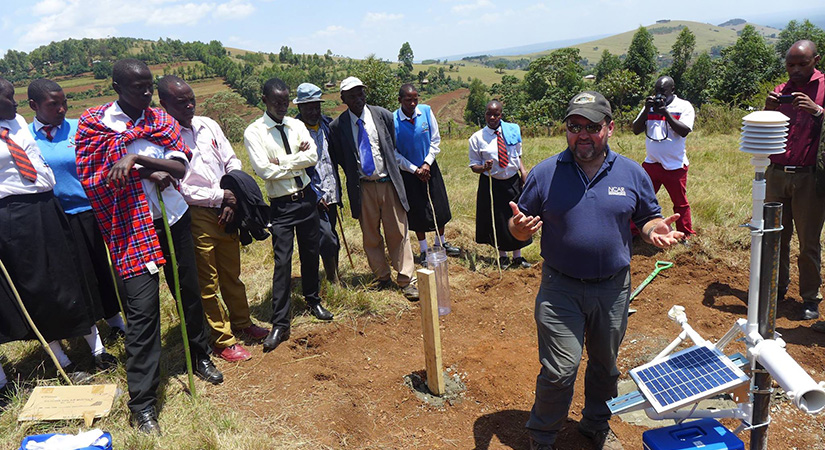
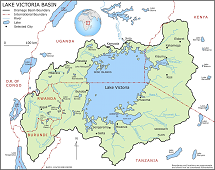 Expedition participants traveled around Kenya en route to Homa Bay via Hell Gate, Lake Naivasha, Kericho, and the Maasai Mara Game Park and conducted GLOBE protocols (hydrology, atmosphere, among others), GLOBE teacher trainings, and school visits. Ylliass Lawani, team member, was thrilled by the enthusiasm of students encountered throughout the expedition. During a visit to Kudos Homabay Boys High School, he commented "I liked the way these students taught the use of Labquest 2 and other GLOBE protocols to their fellow students...Amazing!!"
Expedition participants traveled around Kenya en route to Homa Bay via Hell Gate, Lake Naivasha, Kericho, and the Maasai Mara Game Park and conducted GLOBE protocols (hydrology, atmosphere, among others), GLOBE teacher trainings, and school visits. Ylliass Lawani, team member, was thrilled by the enthusiasm of students encountered throughout the expedition. During a visit to Kudos Homabay Boys High School, he commented "I liked the way these students taught the use of Labquest 2 and other GLOBE protocols to their fellow students...Amazing!!"
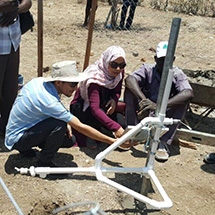 Scientists Martin Steinson and Paul Kucera, from the National Center for Atmospheric Research (NCAR), were also part of the expedition team. Following the expedition, they held a week-long training in Nairobi, 26-30 September, covering revolutionary 3D-printed weather stations, which were provided through the support of the U.S. Agency for International Development's Office of Foreign Disaster Assistance. GLOBE students and other citizen scientists in the region will now be able to contribute scientifically through data collection and research on the Lake, which is sure to evolve during the course of the expeditions in years to come.
Scientists Martin Steinson and Paul Kucera, from the National Center for Atmospheric Research (NCAR), were also part of the expedition team. Following the expedition, they held a week-long training in Nairobi, 26-30 September, covering revolutionary 3D-printed weather stations, which were provided through the support of the U.S. Agency for International Development's Office of Foreign Disaster Assistance. GLOBE students and other citizen scientists in the region will now be able to contribute scientifically through data collection and research on the Lake, which is sure to evolve during the course of the expeditions in years to come.





